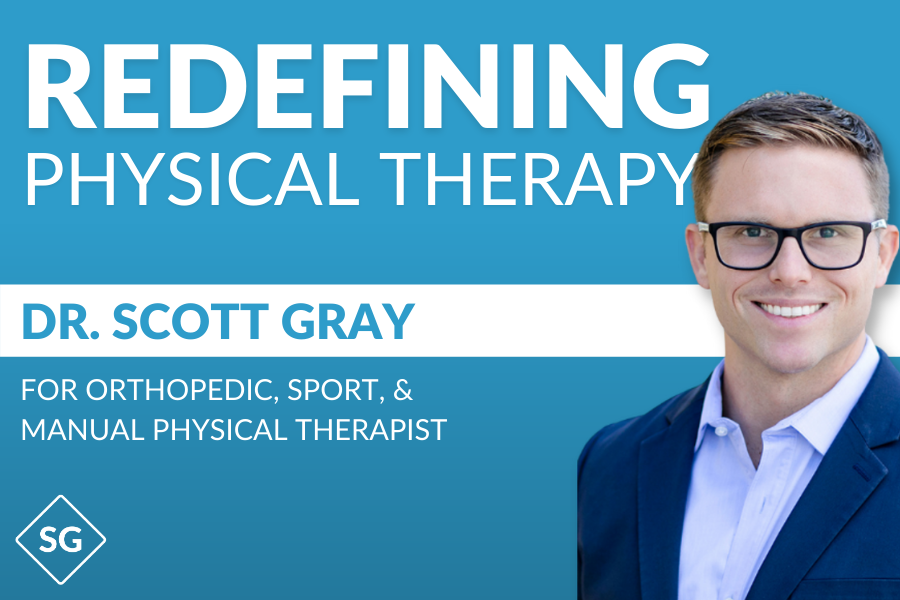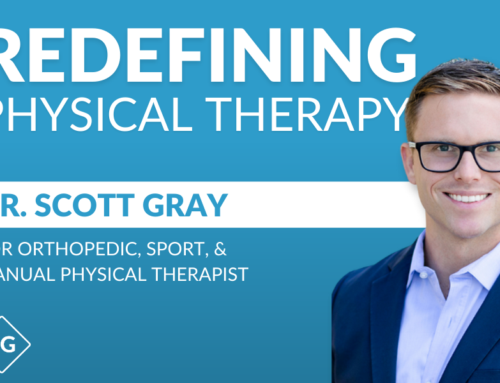Podcast: Play in new window | Download
Subscribe: Spotify | Amazon Music | RSS
Happy Wednesday, everyone. This is Dr. Gray, and we’re going to be talking about hips in this next episode of the Redefining Physical Therapy podcast.
For those of you that are avid listeners, you know that I talk a lot about the hips, the feet, and the thoracic spine.
That’s because these are the three powerful areas of the body that cause dysfunction and chaos.
So if you’re not assessing these areas, then you’re missing a big chunk of what’s really going on with your patient, regardless of what they come in for.
Needless to say, let’s talk about the hips. One thing that I commonly see is, obviously, we see a lack of hip extension in a lot of patients, right, in regards to gait and running, particularly.
One thing that I’ve… mistakes I’ve made is I’ll put them into a Thomas test and they’ll have an adequate hip extension. I won’t see any myofascial tightness.
I’ll then go and check the passive range of motion classical on the table, side-lying.
I even do different accessory glides of the femur, particularly anterior glide and it will come up normal. So I’m scratching my head and saying,
“Hey, but I see a lack of hip extension and I’m seeing quite a bit of a bailout or extension at the lumbar spine. So why is it changing in standing versus laying down?”
That’s because I think a lot of times as clinicians, we forget the two other planes of motion that the hip is going through.
So when that hip is lacking in any of those other planes, it’s going to limit the hip extension, right, the motion that you do see.
For instance, in functional gait, in running, and mechanics, as I go in hip extension, I’m also getting hip abduction and internal rotation.
So if I’m lacking any of those other motions, then I’m going to lack then from an objective standpoint that other motion of hip extension.
In a case, so let’s say, I’m lacking hip internal rotation functionally, when I go into terminal stance, I’m going to then lack hip extension.
The same thing goes with hip abduction, just because that’s the kinematics of the pelvis on the femur when walking.
The way you kind of weed this out from a clinical standpoint is you need to put them in a standing position.
You can test stuff on the table. That’s fine. That’s all good and great. You can test the accessory glides.
You can test for any myofascial tightness that may be limiting those motions. But you’re going to want to put them in standing and you want to just go plane by plane.
What I typically do is if I’m assessing the right hip, I would put the left foot up.
I go stool or chair and I’m weight-bearing on the right. I’m going to have my patient drive their pelvis forward so I’m just looking at the pure sagittal plane extension.
Then from here, I can then have him move his pelvis to the left. When he moves his pelvis to the left, I’m going to be checking for functional hip abduction.
Then from there, I can also take his foot off the stool and test hip internal rotation. The way I do that is how we get it in function.
I’m going to actually just take his left foot and he’s going to step around the corner and rotate his pelvis to the right.
That’s going to create some of that internal rotation at the hip top-down. These are just common things that I’m looking at to see if there’s any compensations or bailout.
A typical bailout you’ll see when someone in the frontal plane doesn’t have hip abduction is they’ll try to rotate or they’ll flex because they want to take the tension off their adductors, right, or that medial hip capsule.
Now, conversely, if I drive his left leg around the corner and into internal rotation, you’re going to see then that foot come off. They may even adduct a little bit, or they’ll just get like a hard stop and balk.
They actually may on their objective tests have a good hip extension, but it’s their abduction and internal rotation that’s limiting their ability to actually extend because, in function, the hip goes through those all three planes of motion at the same time.
I hope that helps clarify a few things, and I hope you can implement this into your practice to help with your better outcomes.
Thank you for listening to Scott Gray’s Redefining Physical Therapy podcast, the number one podcast for orthopedic, sport, and manual physical therapists.


